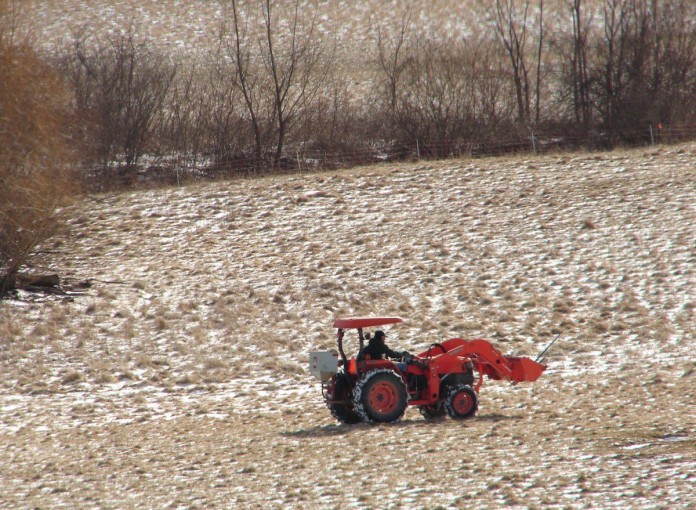Well, it is that time of year again. It seems that we no longer get all the grain in the bin and the equipment put away that it is time to look forward to next year.
Filing taxes, reviewing contracts and attending trade shows are just a few of the things that fill the void that we call winter. Spring will soon be here, and with it, will come the opportunity to improve on last year’s shortcomings.
Frost seeding
In this issue of no-till news, we will be discussing one of those opportunities. As it applies to no-till and soil conservation, frost seeding can be an effective, economical and environmentally sound method of improving forage in pastures and hay fields.
There are many factors that determine whether or not your seeding will be successful.
Do your homework
Scout your fields, look for potential issues. Perhaps last fall you already made some of those observations, and you know where your trouble spots are. This is the Genesis of solving your forage issues. In a close second to field scouting would have to be soil sampling. In particular, special attention should be paid to soil pH.
In general, grasses will tolerate slightly acidic soils. However, if we are trying to insert a legume into a soil with a pH of 6.0 or lower, don’t expect the best results.
Soil pH is the most important controllable factor in the production of your forages. After we have chosen our site, completed our soil sampling, we then must consider what species that we need to insert into the plant community.
In short, what is our main objective? Do we want to insert a legume to make our own nitrogen in a grass monoculture or do we want to insert some orchard grass into an existing, but thinning stand.
As a rule of thumb, hard seed (legume) will establish themselves much better than a cool-season grass. It would also be advantages to a producer to add a nitrogen-fixing rhizobia seed coating to their legume seed prior to planting. This will ensure that your legumes are producing the maximum amount of nitrogen.
The Ohio Agronomy Guide, OSU Extension Bulletin 472, is an excellent resource of selecting seeding rates of forage species.
Methods
That brings us to planting methods. The primary machine for this task has been a broadcast seeder. Whether mounted to a tractor, ATV or some type of handheld device, the principle is still the same.
Fluffy seed (grasses) may prove to be a bigger challenge establish. Do not mix a fluffy grass seed with a hard seed. Sow them separately. The hard seed will settle to the bottom of the seeder leaving the lighter fluffy seed on top. Seed to soil contact is the goal. In most cases, timing is key.
The freezing and thawing of the soil will cause the soil to open up or “honeycomb.” This will give you the greatest opportunity to have the seed come into contact with the soil. It also may be necessary to be creative in some situations. A light harrowing, spreading the seed during a fertilizer application using the fertilizer as a carrier, or a no-till drill are all options available to the producer.
The most important part of a punch in a boxing match is the follow through. So take special care of your new seeding. Mow at the right time, don’t overgraze and continue with a well-planned fertility program.













